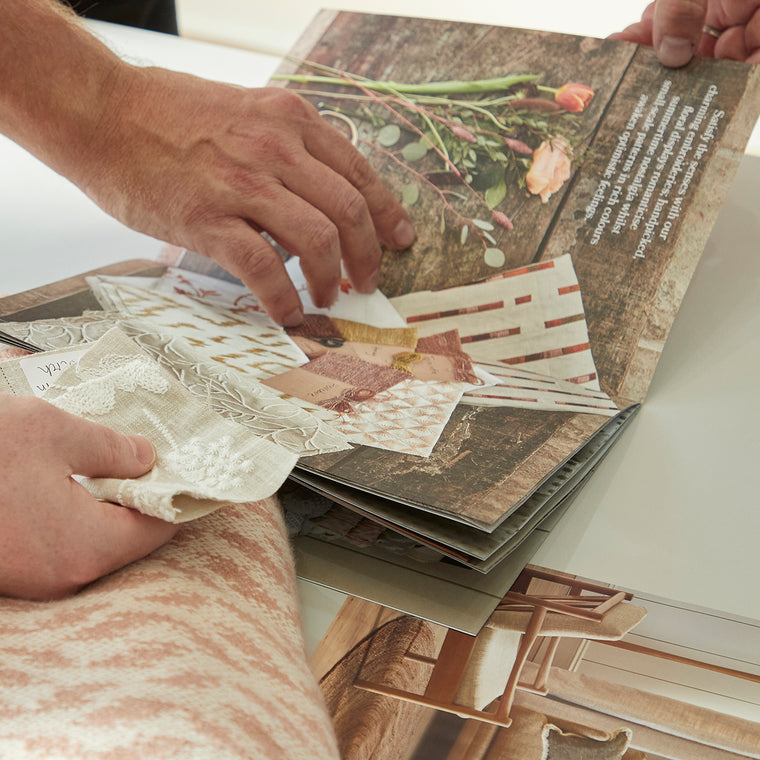Colour Theory: The Magic and Science of Colour in Design
Understanding the pivotal role colour plays in guiding user action.

What if we were to distil the essence of design into a singular element? What would that be? Arguably, it's colour. It's not just about vibrant splashes on a canvas or catchy hues on a screen, it's about communicating, resonating, and engaging.
Why do certain visuals instantly captivate us, while others fall flat? How do specific shades invoke trust, joy, or even urgency? The crux of these phenomena is the intricate dance between colour theory, psychology, and design principles.
Colour isn't just a superficial design choice, it's deeply intertwined with human psychology. It can influence moods, drive decisions, and even shape perceptions. In the realm of UX/UI, the strategic use of colour can guide user actions, making interfaces intuitive and engaging., In branding, colour becomes the silent ambassador, creating lasting impressions and fostering brand recognition.
In this exploration, we'll delve deep into the mesmerising world of colour, uncovering its pivotal role in design, its profound psychological impacts, and its undeniable influence in the domains of UX/UI and branding.
The Colour Wheel: Charting the Chromatic Seas
In the vast ocean of design, one tool emerges as the quintessential navigator, the Colour Wheel. But what is it about this circular spectrum that makes it so indispensable to artists and designers alike?
The Colour Wheel isn't merely an assortment of shades, it's a curated map detailing how hues relate and contrast. It's the guide that helps navigate the delicate balance between harmony and tension in design. But have you ever considered that there might be more than one type of this map?
Branching beyond the conventional, there exist alternative interpretations of the Colour Wheel, such as the RGB (Red, Green, Blue) model used in digital screens, or the CMY (Cyan, Magenta, Yellow) model often found in print. These variants aren't mere whims, they offer distinct ways to understand and manipulate colour, especially in different mediums.
But let's ground ourselves with the basics, the primary colours. These foundational hues (red, blue, and yellow) are the pillars upon which the entire chromatic edifice stands. They're pure, unyielding, and cannot be created by mixing other shades. Yet, when they do intertwine, they give rise to a plethora of secondary and tertiary colours, painting the vibrant tapestry we perceive daily.
Complementary Colours: The Dynamic Duo of Design
In the intricate ballet of colours, there exists a pair that, while opposites, move in perfect harmony, complementary colours. But what sets these duos apart in the grand spectrum of design.
Complementary colours are the chromatic partners that stand face to face on our trusted Colour Wheel. When juxtaposed, they enhance each other's vibrancy, creating a dynamic visual interplay. Their significance? They can elevate a design from the mundane to the mesmerising, drawing the viewer's attention and emphasising key elements.
However, like all potent tools, they come with their caveats. When these vivid pairs are overly saturated and placed adjacent to one another, they can create a visual discord, overwhelming the viewer's senses. The brilliance that they're celebrated for can, in such scenarios, become a design's Achilles' heel.
Yet, there's another layer to their relationship. When these contrasting hues are blended, rather than producing a cacophony, they neutralize each other, giving birth to muted tones of grey or even deep blacks. It's an alchemical transformation, a testament to the nuanced interplay of colours.
Analogous Colours: The Whispered Conversations of Design
Venture into the world of hues, and you'll encounter a set of colours that speak in hushed tones, not through loud contrasts, but gentle transitions. Welcome to the realm of analogous colours.
Resting side by side on our beloved colour spectrum, analogous colours share a common chromatic lineage. Think of them as siblings, each distinct yet bearing a familial resemblance. This closeness imparts a serene fluidity, making them perfect for creating a cohesive, unified visual feel.
When integrated into designs, analogous shades bring about a sense of unity and calm. They're ideal for gradients, backgrounds, and designs aiming for a tranquil ambiance. However, herein lies a subtle trap. Over-dependence on these harmonious hues can lead to designs that, while peaceful, lack the necessary contrast to direct a viewer's attention or highlight essential elements.
In essence, while the beauty of analogous colours lies in their harmonious interplay, designers must tread carefully. The challenge is to weave them into the tapestry of design without allowing the outcome to become monochromatic or lacklustre.
Colour Psychology in UX/UI: Beyond the Aesthetic Veil
Dive deeper into the nuances of UX/UI design, and a revelation awaits, colour isn't merely about beauty. It's a silent strategist, influencing decisions, behaviours, and perceptions.
Have you ever pondered why a particular app feels intuitive or why certain notifications demand immediate attention? Behind these interactions lies the subtle science of colour psychology. Colours bear emotions, and in the digital realm, they carry distinct messages, prompting users towards specific actions.
Take, for instance, the humble button. Its hue could be the difference between a user making a purchase, signing up, or navigating away. Ever noticed the prevalence of red for 'urgent' sales or green for 'go ahead' actions? It's no accident. Studies have pinpointed a tangible link between button hues and conversion rates. A slight shift in shade could lead to significant changes in user responses.
Yet, a holistic approach is crucial. While individual elements play their part, it's the symphony of the overall colour palette that sets the mood and user experience. A disjointed palette can lead to confusion, while a harmoniously curated one can guide users seamlessly, creating memorable interactions.
In the grand theatre of UX/UI design, colours are more than mere actors, they are the directors, subtly guiding the narrative and crafting memorable digital stories.
The Intrigue Behind a Colour's Moniker
In the vibrant lexicon of design, colours don't merely exist, they tell tales, evoke emotions, and leave lasting impressions. But have you ever paused to ponder the weight carried by the names attributed to these shades?
Names aren't just labels, they're imbued with psychology. When you hear "sunset orange" instead of just "orange," the mind doesn't merely see a colour—it visualises a serene evening, feeling the warmth of the setting sun. It's this evocative power that makes the nomenclature of colours so vital.
Consider the allure of "Tuscan sun yellow" over a simple "yellow" or the mysterious depth of "midnight blue" as opposed to a basic "dark blue." These elaborately named colours don't just describe, they transport us, allowing our imaginations to paint vivid canvases.
This gravitation towards distinctively named shades isn't limited to art or design. Scan the aisles of DIY or homeware store, and you'll find products in "emerald glade" or "Ivory Lace." These unique monikers aren't mere marketing gimmicks. They cater to a consumer's desire for the extraordinary, adding an intangible value to the tangible.
In essence, while colours captivate our senses, their names seize our imagination, reinforcing the age-old adage there's more in a name than meets the eye.
Conclusion
Navigating the multifaceted realm of design brings us face to face with a compelling truth, colour, in all its visual splendour, carries an underlying narrative, one that's both psychological and emotional. From the foundational guidance of the Colour Wheel to the nuanced choreography of complementary and analogous shades, each hue plays its part in crafting stories that resonate.
Yet, beyond their aesthetic charm, we've unveiled the deeper layers, the psychology of UX/UI interactions, the evocative power of a shade's nomenclature, and the subtle cues that guide perceptions and decisions. These insights challenge us to view colours not just as palette selections but as strategic tools, brimming with potential.
Every designer, artist, or creative should be able to harness the dual essence of colour—its beauty and its meaning. In doing so, not only will your designs be visually captivating, but they'll also echo with depth, emotion, and purpose. After all, in the art of design, colours are more than mere shades, they are the soulful whispers of a narrative waiting to be told.
Ready to harness the dual power of colour in your designs?

